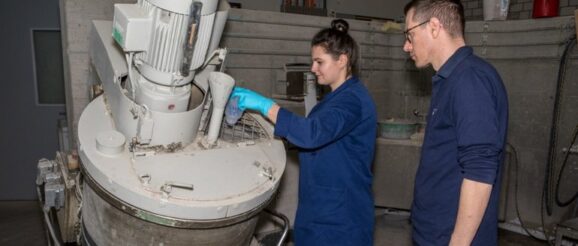Researchers receive patents for prestressed concrete innovation | Construction Dive

Dive Brief:
Dive Insight:
Prestressing is generally used when a concrete element has to withstand very high loads — for instance, beams, bridges or cantilevered structures. In conventional pretensioning technology, the reinforcements or tendons — usually made of steel — are anchored on both sides of the element before the concrete is cast, put under tension and released again after the concrete has set.
But because steel is susceptible to corrosion, the concrete layer around the prestressing rods must have a certain thickness, which requires more concrete to be used. Building scientists have long searched for an alternative process that would make building with concrete easier, less costly and more efficient.
As early as the 1990s, carbon fiber-reinforced polymers (CFRP) were used to replace steel reinforcement. Because CFRP does not corrode, it is possible to produce significantly leaner concrete components with very similar structural properties.
“But if you want to prestress these CFRP reinforcements in order to be able to build even thinner structures with a higher load-bearing capacity, you reach your limits,” said researcher Mateusz Wyrzykowski in a press statement.
Since expensive prestressing beds are required and anchoring CFRP bars is more complicated than using steel, however, prestressed CFRP high-performance concrete is still not very widely used.
The Empa team has gotten over that hurdle by dispensing with anchoring on both sides of the concrete element, and using a special formula for the concrete so it expands as it hardens. As a result of this expansion, the concrete puts the CFRP bars in its interior under tension, to do the prestressing work itself.
“Our technology opens up completely new possibilities in lightweight construction,” said Wyrzykowski. “Not only can we build more stable structures, we also use considerably less material.”
The Empa researcher also envisions completely new fields of application. “We can easily prestress in several directions at the same time, for example for thin concrete slabs or filigree curved concrete shells,” he said.
